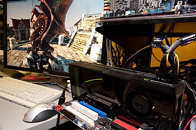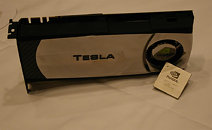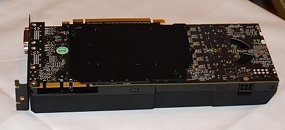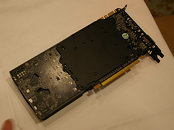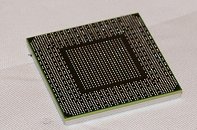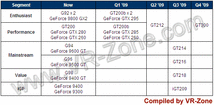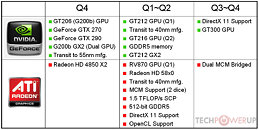
NVIDIA Fermi-based GeForce Accelerator Spotted Working
"This puppy here, is Fermi" announced a proud Jen-Hsun Huang, NVIDIA's CEO. The shiny, chrome-decked Tesla GPGPU accelerator that makes use of NVIDIA's Fermi architecture, soon turned out to be a mock-up, aimed solely at announcing the completion of development of the Fermi architecture. It was also strategically timed to coincide with AMD's market launch of the industry's first DirectX 11 compliant graphics cards under the Fermi is significant since it supports the DirectX 11 API. Today ironically, on the occasion of AMD's launch of its "Hemlock" Radeon HD 5970 flagship accelerator, a picture showing a working consumer graphics variant of Fermi working. It is as if to assert that a Fermi derivative is no more the paperweight it was when it was first paraded to the media.
NVIDIA's Fermi GPU architecture is to be implemented in three variants: GF100, GT300, and GT300GL, to drive three of the company's product lines: GeForce, Tesla, and Quadro, respectively. GF100 is of utmost relevance to us. A picture leaked recently to Bright Side of News shows a GeForce accelerator based on GF100 to be working, where it appears to be rendering the Unigine Heaven DirectX 11 benchmark. This early sighting, however, doesn't mean that the product is any closer to its launch. It is still slated for Q1 2010, meaning that it will miss out on the X-Mas shopping season. The GF100 GPU is said to have 512 shader cores, and connects to GDDR5 memory across a 384-bit wide memory interface.
NVIDIA's Fermi GPU architecture is to be implemented in three variants: GF100, GT300, and GT300GL, to drive three of the company's product lines: GeForce, Tesla, and Quadro, respectively. GF100 is of utmost relevance to us. A picture leaked recently to Bright Side of News shows a GeForce accelerator based on GF100 to be working, where it appears to be rendering the Unigine Heaven DirectX 11 benchmark. This early sighting, however, doesn't mean that the product is any closer to its launch. It is still slated for Q1 2010, meaning that it will miss out on the X-Mas shopping season. The GF100 GPU is said to have 512 shader cores, and connects to GDDR5 memory across a 384-bit wide memory interface.
